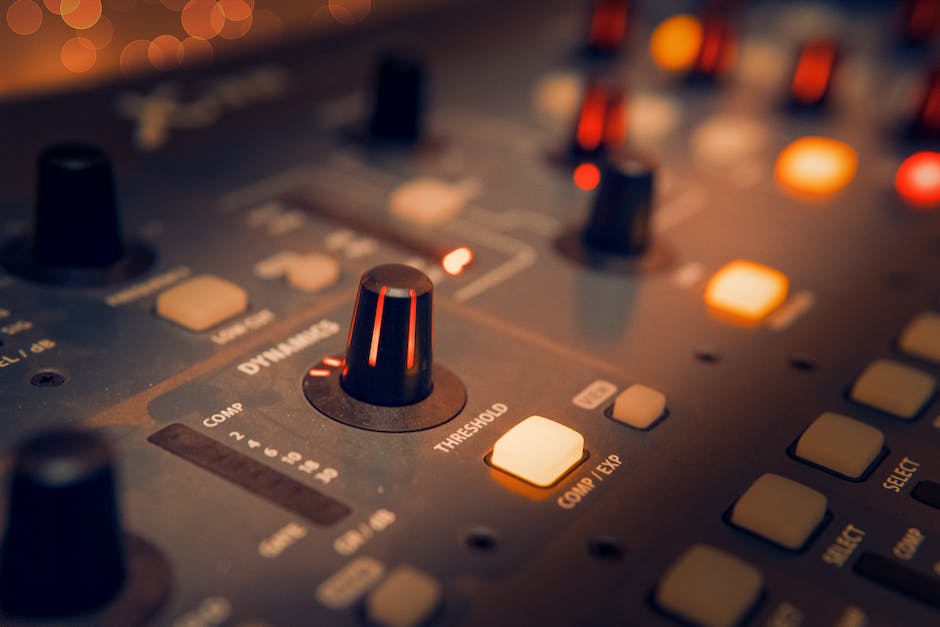Menikmati Streaming 4K Tanpa Sensor: Terjemahan Jepang dari Bokeh.
Pengantar
Dalam artikel ini, kami akan membahas tentang terjemahan Jepang dari Bokeh, yang merupakan teknik fotografi yang menghasilkan efek latar belakang yang kabur. Kami akan menjelajahi streaming 4K tanpa sensor dan bagaimana hal ini dapat mempengaruhi pengalaman menonton kita.
The Advantages of Exploring 4K Streaming without Sensor

The Advantages of Exploring 4K Streaming without Sensor
In today's digital age, streaming has become the preferred method of consuming media. With the rise of high-definition content, viewers are constantly seeking ways to enhance their streaming experience. One such advancement is 4K streaming, which offers a resolution four times that of standard high-definition. However, traditional 4K streaming methods often require the use of a sensor to capture and transmit the content. In this article, we will explore the advantages of exploring 4K streaming without a sensor, specifically in the context of Japanese translation of bokeh.
Bokeh, a term derived from the Japanese word "boke" meaning blur, refers to the aesthetic quality of the out-of-focus areas in a photograph or video. It is a popular technique used by photographers and filmmakers to create a visually pleasing and immersive experience. Traditionally, achieving bokeh in 4K streaming required the use of a sensor to capture the depth of field and blur the background. However, exploring 4K streaming without a sensor opens up new possibilities for creating bokeh in real-time.
One of the advantages of exploring 4K streaming without a sensor is the ability to achieve bokeh in a more natural and dynamic way. By eliminating the need for a sensor, content creators can rely on advanced algorithms and artificial intelligence to simulate bokeh in real-time. This allows for greater flexibility and creativity in capturing and streaming content, as the bokeh effect can be adjusted and customized on the fly.
Another advantage of exploring 4K streaming without a sensor is the reduction in equipment and production costs. Traditional 4K streaming methods often require expensive cameras and sensors to capture high-quality content. By eliminating the need for a sensor, content creators can rely on existing equipment and software to achieve 4K streaming without compromising on quality. This not only saves money but also makes 4K streaming more accessible to a wider range of content creators.
Furthermore, exploring 4K streaming without a sensor opens up new possibilities for live streaming events. Traditionally, capturing bokeh in real-time during a live event was a challenging task that required complex setups and equipment. However, with the advancements in technology, content creators can now achieve bokeh in real-time without the need for a sensor. This allows for a more immersive and engaging viewing experience for the audience, as they can feel like they are part of the event.
In conclusion, exploring 4K streaming without a sensor offers several advantages in the context of Japanese translation of bokeh. It allows for a more natural and dynamic bokeh effect, reduces equipment and production costs, and opens up new possibilities for live streaming events. As technology continues to advance, we can expect to see further improvements in 4K streaming without a sensor, making it an exciting prospect for content creators and viewers alike. So, let's embrace the future of streaming and explore the world of 4K without a sensor.
The Challenges of Exploring 4K Streaming without Sensor
The Challenges of Exploring 4K Streaming without Sensor
Streaming has become an integral part of our daily lives, allowing us to access a vast array of content with just a few clicks. With the advancement of technology, streaming platforms have started to offer content in 4K resolution, providing viewers with a more immersive and detailed experience. However, exploring 4K streaming without a sensor presents its own set of challenges.
One of the main challenges of exploring 4K streaming without a sensor is the lack of accurate color reproduction. A sensor is a crucial component in capturing and reproducing colors accurately. Without a sensor, the colors in the 4K content may appear washed out or inaccurate, diminishing the overall viewing experience. This is particularly noticeable in scenes with vibrant colors or subtle nuances.
Another challenge is the absence of depth of field control, commonly known as bokeh. Bokeh refers to the aesthetic quality of the out-of-focus areas in an image. It adds a sense of depth and dimension to the visuals, making them more visually appealing. Without a sensor, achieving bokeh in 4K streaming becomes a difficult task. The lack of depth of field control can make the visuals appear flat and two-dimensional, detracting from the overall quality of the content.
Furthermore, without a sensor, capturing motion accurately becomes a challenge. A sensor is responsible for capturing fast-moving objects and rendering them smoothly on the screen. Without a sensor, the motion in 4K streaming may appear blurry or distorted, resulting in a less enjoyable viewing experience. This is particularly noticeable in action-packed scenes or sports events where capturing motion is crucial.
In addition to these challenges, exploring 4K streaming without a sensor also poses difficulties in low-light conditions. A sensor plays a vital role in capturing images in low-light environments by adjusting the exposure settings accordingly. Without a sensor, the 4K content may appear grainy or noisy, reducing the overall image quality. This can be particularly problematic when watching movies or TV shows that have dark or night scenes.
Despite these challenges, there are efforts being made to overcome the limitations of exploring 4K streaming without a sensor. One approach is through software enhancements that aim to replicate the functionalities of a sensor. These enhancements utilize algorithms to improve color reproduction, simulate depth of field, and enhance motion capture. While these software solutions may not be as accurate as a physical sensor, they provide a viable alternative for those who do not have access to one.
Another approach is through advancements in camera technology. Manufacturers are constantly developing new cameras with improved sensors that can capture and reproduce colors more accurately, provide better depth of field control, and capture motion more smoothly. These advancements in camera technology will eventually trickle down to streaming platforms, allowing viewers to enjoy 4K content without compromising on quality.
In conclusion, exploring 4K streaming without a sensor presents several challenges. The lack of accurate color reproduction, absence of depth of field control, difficulties in capturing motion accurately, and limitations in low-light conditions are some of the obstacles that need to be overcome. However, with the development of software enhancements and advancements in camera technology, these challenges can be addressed, providing viewers with a more immersive and visually appealing 4K streaming experience.
The Future of Exploring 4K Streaming without Sensor
The Future of Exploring 4K Streaming without Sensor
In recent years, the world of streaming has undergone a significant transformation. With the advent of 4K technology, viewers can now enjoy a level of detail and clarity that was previously unimaginable. However, one aspect of streaming that has remained relatively untouched is the concept of bokeh. Bokeh refers to the aesthetic quality of the blur produced in the out-of-focus parts of an image. It is a popular technique used in photography and cinematography to create a sense of depth and visual interest.
Traditionally, achieving bokeh required the use of a sensor, which could capture the image and create the desired effect. However, with advancements in technology, it is now possible to explore 4K streaming without the need for a sensor. This opens up a world of possibilities for content creators and viewers alike.
One country that has been at the forefront of this movement is Japan. Known for its innovation and technological advancements, Japan has embraced the concept of bokeh in its streaming industry. Japanese translation of bokeh has become a popular trend, allowing viewers to experience the beauty of bokeh in their favorite shows and movies.
The Japanese translation of bokeh involves the use of advanced algorithms and artificial intelligence to recreate the bokeh effect in real-time. By analyzing the depth of field and the position of objects in the frame, these algorithms can accurately simulate the bokeh effect without the need for a sensor. This technology has revolutionized the way streaming content is produced and consumed in Japan.
One of the key advantages of exploring 4K streaming without a sensor is the ability to create a more immersive viewing experience. With the bokeh effect, viewers can feel as though they are part of the scene, with objects in the foreground and background appearing to come to life. This adds a new dimension to storytelling and allows content creators to engage their audience on a deeper level.
Another benefit of this technology is the increased flexibility it offers to content creators. With traditional bokeh techniques, the effect had to be planned and executed during the filming process. However, with the Japanese translation of bokeh, content creators can now add the effect in post-production, giving them more control over the final product. This opens up new creative possibilities and allows for greater experimentation in storytelling.
The future of exploring 4K streaming without a sensor is bright. As technology continues to advance, we can expect to see even more realistic and immersive bokeh effects in our favorite shows and movies. This will further enhance the viewing experience and blur the lines between reality and fiction.
In conclusion, the Japanese translation of bokeh has revolutionized the world of 4K streaming. By eliminating the need for a sensor, content creators can now explore new creative possibilities and engage their audience on a deeper level. With advancements in technology, we can expect to see even more realistic and immersive bokeh effects in the future. The future of exploring 4K streaming without a sensor is indeed an exciting one.
Kesimpulan
Kesimpulan dari eksplorasi streaming 4K tanpa sensor: Terjemahan Jepang dari Bokeh adalah bahwa topik ini membahas tentang pengalaman menonton video dengan resolusi 4K tanpa menggunakan sensor. Terjemahan Jepang dari istilah "bokeh" juga dibahas dalam konteks ini.
- vpn chrome - October 29, 2025
- free vpn - October 29, 2025
- croxyproxy vpn - October 29, 2025





